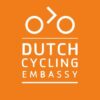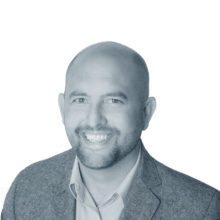Safe System and Active Mobility
Online Course
About the Course
Poor road safety (whether perceived or actual) is one of the main barriers that prevents people from using active modes of transport, such as walking or cycling, on a regular basis. When looking at the relationship between active mobility and road safety, road users are more eager to shift to, or maintain the use of, active travel modes if the wider mobility context is objectively safer, resulting in a greater subjective feeling of road safety. Only roads where people can securely hop on their bikes and walk safely down the street will convince more and more users to embrace active modes of transport, creating a virtuous circle.
There is a direct link between the Safe System approach to road safety and sustainable, active mobility. Most road crashes and their consequences are not an inevitable cost of growth or mobility. They do not take place in isolation. The dynamics on streets, roads, and highways are part of a wider system: they are generated by the interrelationship between components such as institutions, laws, regulations, land use, infrastructure, vehicles, and road users, among others. When implemented effectively these system inputs interact to create roads and cities that are safe for their citizens.
The overall aim of this course is to provide road and mobility engineers, designers, planners, decision-makers and advocates with both theoretical knowledge and practical instruments needed to work on road safety issues in the context of their own location, focusing on active mobility. The course aims to give a robust introduction to the safe system approach, its relevance for developing strategies that promote active mobility and perspectives on the application of the approach.
This course is supported by The Netherlands’ Ministry of Infrastructure and Water Management as part of the Global Capacity Building program, the Global Road Safety Partnership, the Dutch Cycling Embassy, and the FIA Foundation.
Course details
THIS COURSE IS NOW CLOSED.
- 25 January - 22 February 2024
- Five weekly sessions
- Thursday, 13.00 - 16.00 CET
- Online
- 50
This course is ideal for:
- Professionals working for governments, private sector, universities, NGOs or international organizations.
- Professionals dealing with the design and implementation of road safety strategies.
- Infrastructure and public space designers and planners.
- Decision and policy makers, researchers or advisors.
- Anyone interested in road safety.
Structure
The course will follow a blended learning approach and has been designed to be as interactive as possible.
Each weekly session will include an introductory lecture, discussion, Q&A, interactive activities, and student presentations. It is expected that students actively participate during the live sessions and prepare small homework assignments.
A recording will be temporarily available after each session (only during the same week of the session).
Participants that attend at least 4 sessions and complete homework assignments will receive a Certificate of Participation.
Session 1
25 January 2024
Introduction to the Safe System approach.
Session 2
1 February 2024
Safe active mobility infrastructure.
Session 3
8 February 2024
Effective legislation, regulations and planning instruments for safe active mobility.
Session 4
15 February 2024
Education and communication for safe active mobility.
Session 5
22 February 2024
Learning from practice: successful case studies from Colima (Mexico) and Tanga (Tanzania).
Approach
Evidence based
We use methodologies and materials that are evidence-based and scientifically sound – supporting a holistic approach to data collection, problem analysis, research and innovation, monitoring and evaluation.
Leading experts
Our courses are delivered by world leading researchers and professionals with experience of working in and with low and middle income countries to improve road safety and sustainable mobility.
Peer learning
Our learning environment encourages students to exchange knowledge and share experiences. This helps in identifying creative, locally relevant solutions to common challenges and issues.
Tailored for LMICs
We base our learning on the Safe System Approach and how this can be tailored and adapted to local contexts, with a focus on the specific challenges faced by low and middle income countries.
Train the trainer
We support local development and the governance of road safety management by developing capacity amongst practitioners and professionals who will return home and share their learning with others.
What will you learn?
By the end of this course you will be able to:
- Describe the mutually reinforcing link and the synergies between the Safe System approach and active mobility
- Understand the importance of the Safe System approach for improving road safety for active mobility
- Identify the appropriate tools and instruments that can be applied to increase road safety in relation to supporting active mobility
- Critically assess the applicability of different instruments in your own local context
- Understand how the safe system approach could be applied to and improve strategies that promote active mobility
This course is supported by




The Global Capacity Building program is initiated by Belgium, The Netherlands, and Luxembourg. The program brings together key stakeholders with proven track records in active mobility to collaborate in scaling up current efforts in capacity-building and international financing for walking and cycling. The program’s objectives include:
- Facilitating the training of 10,000 active mobility experts within a decade.
- Providing access to investment opportunities through the establishment of a specialized Active Mobility Fund.








